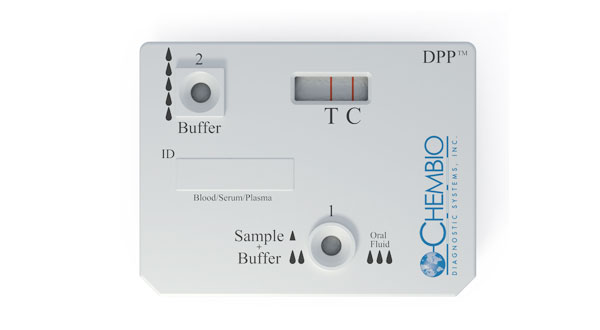Chembio Diagnostics has acquired a worldwide, non-exclusive sublicense from Bio-Rad Laboratories. Under the terms of the agreement, Bio-Rad will permit Chembio to manufacture and market a rapid test for both HIV-1 and HIV-2 under Chembio brands.
Bio-Rad will retain rights to patents claiming the HIV-2 virus and various means to detect its presence in infected patients.
In June 2004, OraSure entered into a similar arrangement with Bio-Rad. OraSure’s lead product, OraQuick ADVANCE, uses oral fluids to test for HIV 1/2 and provides accurate results in 20 minutes. The test has been approved by FDA and has received support from many governmental agencies including the CDC.
Chembio Diagnostics’ Sure Check HIV and the STAT-PAK are single-use tests for the rapid, visual detection of HIV antibodies. The tests are FDA approved and CLIA waived.
Like OraQuick, these assays produce results within 20 minutes allowing testing, counseling and referrals to take place in one visit. However, they depend on whole blood, venous whole blood, serum or plasma to derive results.
Commenting on the agreement, Larry Siebert, Chembio’s President and CEO said, “Securing this HIV-2 sublicense strengthens our competitive position for the manufacture and marketing of our current rapid HIV test and for our new Dual Path Platform HIV 1/2 oral fluid test that is in development.”

The Dual Path Platform (DPP) offers significant advantages over traditional Lateral Flow (LF) assays. The independent flow paths of the DPP increase the efficiency of antibody binding to the immobilized antigen. This results in improved sensitivity and faster testing. DPP is also well suited to a variety of testing media including blood, serum, urine, feces or saliva. In conventional LF assays some samples will migrate slowly. With DPP technology, sorbent materials are utilized to permit faster migration and faster results.
There are an estimated 33 million people in the world currently living with the HIV virus. Although the number of reported cases of HIV-2 infection in the U.S. is still relatively low, the incidence of HIV-2 infection is significantly higher abroad; many foreign countries now require HIV-1 and HIV-2 testing.